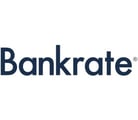For media inquiries on these stories and more, contact credit card expert and industry analyst Bill Hardekopf at (205) 985-9725 or billh@cardrates.com.
1. The Different Directions The “Big Three” Card Issuers are Taking to Get Customers

What’s going on in the minds of credit card issuers like Chase, Citi, and American Express these days? They don’t seem to have the same vision of the future for their individual market shares. In fact, they’re besieging entirely different credit card demographics as they search for new customers and attempt to retain existing ones.
It’s generally ideal for consumers when banks squabble over the same customers. When issuers relinquish certain customers, however, the competition isn’t as fierce and the offers become less and less outstanding. Let’s take a look at the current trends of the “Big Three” issuers, what we can infer [about] the short-term future of travel credit cards, and what it means for you.
• Story By: Joseph Hostetler, The Points Guy
2. The Buy Now, Pay Later Trend Could Be The Next Hidden Source of Consumer Debt

“Buy now, pay later” options are becoming increasingly popular, but analysts warn of default risks given the lack of credit checks and “opaque” debt reporting. Not being able to check on consumers’ credit history could lead to lenders to underestimate borrowers’ debt levels when assessing new loan applications, they said.
There’s also the risk of consumers chalking up more credit card debt in order to pay off their “buy now, pay later” obligations. BNPL providers usually tie up with retailers, both online and in stores, to offer consumers the option to pay in installments, with perks including no late fees and often high loan limits.
• Story By: Weizhen Tan, CNBC
3. Hackers Release A Million Credit Cards For Free

Hackers have released the credit card details of a million people as a promotional stunt for a new criminal marketplace. According to Italian security firm D3Labs, the creators of AllWorld cards released the data, stolen in 2018 and 2019, on several hacking forums.
The data includes credit card number, expiration date, CVV, name, full address, and email address or phone number. The team says that around half the cards it examined were still operational, and hadn’t been identified as compromised. Around half were issued by Visa and half by Mastercard, and three quarters are debit cards.
• Story By: Emma Woollacott, Forbes
4. 3 Trends Shaping The Credit Card Industry

Three new trends are shaping the credit card industry in this time of rapid change. Credit unions looking to offer a competitive credit card program should be aware of these trends and implement adjustments to remain relevant to cardmembers.
1. Increasing need for enhanced digital capabilities. 2. Changing rewards environment. 3. Uncertain future credit environment.
• Story By: Chris Draack, CUNA.org
5. Venmo Credit Cards Can Now Turn Cash Back Into Cryptocurrency

Venmo credit card users can now automatically purchase cryptocurrency using cash back earned from card purchases. The new feature “expands choice in how customers can spend their cash back while allowing them to start exploring crypto,” which added cryptocurrency features to its app earlier this year.
Venmo users can select their token of choice: Bitcoin, Ethereum, Litecoin, or Bitcoin Cash. A conversion spread is built into each monthly transaction, so there are no additional fees, and customers are welcome to hold or sell their crypto within the Venmo app.
• Story By: Stephanie Mlot, PCMag
6. 72% of Millennials Say Social Media Impacts Their Buying Choices

According to a survey from CreditCards.com last week, 72% of millennials say social media impacts their buying decisions. This is the most likely age group to be influenced by social media in their spending, followed by 66% of Gen-Z, 49% of Gen X, and 45% of baby boomers.
Millennials tend to trust posts from their friends and family, with this type of content influencing 38% of millennials when it comes to shopping. Only 20% of millennials report making purchases inspired by posts from celebrities or influencers. Advertisements are the second most influential type of social media content, impacting buying decisions of 31% of millennials.
• Story By: Ana Staples, Bankrate
7. Justice Department Supports the Federal Reserve Board’s Proposed Rule on Debit Card Interchange Fees and Routing to Promote Competition

The Justice Department’s Antitrust Division filed a comment in support of the Federal Reserve Board of Governors’ notice of proposed rulemaking on Debit Card Interchange Fees and Routing.
The Board’s proposed rule would require banks that issue debit cards to give merchants a choice of debit networks for transactions made online and in circumstances where consumers pay without physically presenting their debit cards. By introducing choice, the proposed rule has the potential to reduce merchants’ transactional costs and ultimately save consumers money.
• Story In: The United States Department of Justice
8. Wells Fargo Survey Finds Credit Card Users Purged During COVID-19

A Wells Fargo survey reveals customers made major purges during COVID-19. For example, 72% decluttered closets, 29% purged social media friends, and 33% simplified finances.
The survey also found a few data points surrounding credit card usage: 44% of consumers want cash back features on their cards; 22% want sign-on bonuses for cards; 38% want rewards. Consumers find current credit card reward management tedious.
• Story In: ATM Marketplace
9. Lie of Credit: American Express Tells Its Workers Capitalism Is Racist

American Express, which made a $2.3 billion profit last quarter, invited the great-grandson of the Nation of Islam’s founder to tell its employees that capitalism is evil. Khalil Muhammad argued that the system of capitalism was founded on racism and that “racist logics and forms of domination” have shaped Western society from the Industrial Revolution to the present.
Muhammad argued the company should reduce standards for black customers and sacrifice profits in the interest of race-based reparations.
• Story By: Christopher F. Rufo, The New York Post
10. Visa Gets a Brand Makeover, New Positioning With ‘Meet Visa’ Campaign

Visa is more than a credit card company, and wants the world to know it. The company is reintroducing itself as a network where everyone and anyone can be part of the global digital economy.
The new brand identity, built in partnership with Mucho, is designed to symbolize change. As part of the repositioning, the brand logo got a refresh including a new design font, along with a darker, bolder blue to replace the previous blue. In addition, the brand symbol is composed of colors of the old-school credit card (blue, white, and gold) minus the company name.
• Story By: Amy Corr, MediaPost
11. The 10 U.S. States With The Most Credit Card Debt

Americans started 2021 with nearly $900 billion in credit card debt. And that amount is projected to increase by $60 billion by the end of the year, according to WalletHub.
To determine the states with the highest and lowest amounts of credit card debt, WalletHub looked at average credit card balances and payments made since September 2020, using data from credit reporting agency TransUnion, the Federal Reserve, and the U.S. Census Bureau. Some states, like Montana, Colorado, and New Hampshire, seem to be more prone to debt than others.
• Story By: Francisco Velazquez, CNBC
12. Australia’s NAB to Buy Citi’s Local Consumer Business in $882 Million Deal

National Australia Bank will buy Citigroup’s local consumer unit for about $882 million, as the American bank exits the region while buy-now, pay-later rivals challenge the old credit card business model.
The deal consolidates more than 90% of the country’s credit cards industry into the hands of Australia’s Big Four banks, with NAB adding a million customers through the deal to become the nation’s second-largest credit card provider.
• Story By: Paulina Duran, Reuters
Advertiser Disclosure
CardRates.com is a free online resource that offers valuable content and comparison services to users. To keep this resource 100% free, we receive compensation for referrals for many of the offers listed on the site. Along with key review factors, this compensation may impact how and where products appear across CardRates.com (including, for example, the order in which they appear). CardRates.com does not include the entire universe of available offers. Editorial opinions expressed on the site are strictly our own and are not provided, endorsed, or approved by advertisers.





![3 FAQs: ATM Card vs. Debit Card vs. Credit Card ([updated_month_year]) 3 FAQs: ATM Card vs. Debit Card vs. Credit Card ([updated_month_year])](https://www.cardrates.com/images/uploads/2016/05/atm-card-vs-debit-card-vs-credit-card--1.png?width=158&height=120&fit=crop)
![What Card is in the Jennifer Garner Credit Card Commercial? ([updated_month_year]) What Card is in the Jennifer Garner Credit Card Commercial? ([updated_month_year])](https://www.cardrates.com/images/uploads/2018/05/jennifer-2.jpg?width=158&height=120&fit=crop)
![Can You Pay a Credit Card with a Credit Card? 3 Ways Explained ([updated_month_year]) Can You Pay a Credit Card with a Credit Card? 3 Ways Explained ([updated_month_year])](https://www.cardrates.com/images/uploads/2017/02/card-with-card-2.png?width=158&height=120&fit=crop)



![3 Key Differences: Charge Card vs. Credit Card ([updated_month_year]) 3 Key Differences: Charge Card vs. Credit Card ([updated_month_year])](https://www.cardrates.com/images/uploads/2017/03/charge-card-vs-credit-card.jpg?width=158&height=120&fit=crop)